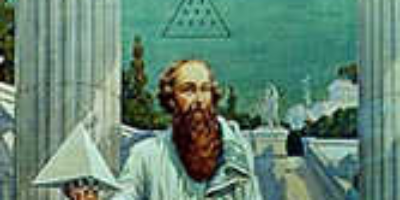The relationship of numbers as shown by the (1 jan 570 ano antes da era comum – 9 h 25 m, 24 jan 495 ano antes da era comum)
Descrição:
Pythagoras was an ancient Greek Philosopher and Mathematician. He is most commonly credited with the Pythagorean theorem which is used in Geometry. The theorem was developed to answer the problem of the duplication of a square. The notable Pythagoras squares are the equation for a right triangle; it is shown as; a^2+b^2=c^2. His eye for seeing equations allowed him to recognize that the cosmos and other heavenly bodies are all in accordance with a mathematical equation. For example, Pythagoras' philosophy had to do with the theory that the unlimited is the limited. Once he recognized this theory the numerical ratios that determine the regular intervals of the musical scale became discoverable to him. Pythagoras is considered to be somewhat mysterious since he is not credited for any academic writings, in fact, most of his credit came from the followers of the philosophy of Pythagoras. His school and teachings have eluded some to believe he may have had his own cult-like following with later Philosophers such as Plato and Aristotle claiming to be Pythagoreans. What is known is that the doctrine of Pythagoras was that all things are numbers.https://youtu.be/pVo6szYE13Y
Cited:
Huffman, Carl. “Pythagoras.” Stanford Encyclopedia of Philosophy, Stanford University, 23 Feb. 2005, plato.stanford.edu/entries/pythagoras/.
Internet Encyclopedia of Philosophy, www.iep.utm.edu/pythagor/.
Adicionado na linha do tempo:
Data:
1 jan 570 ano antes da era comum
9 h 25 m, 24 jan 495 ano antes da era comum
~ 74 years
